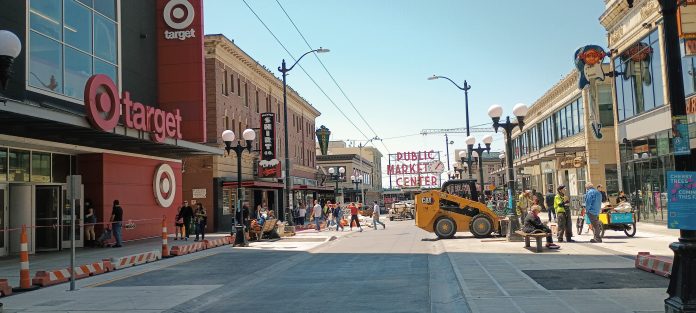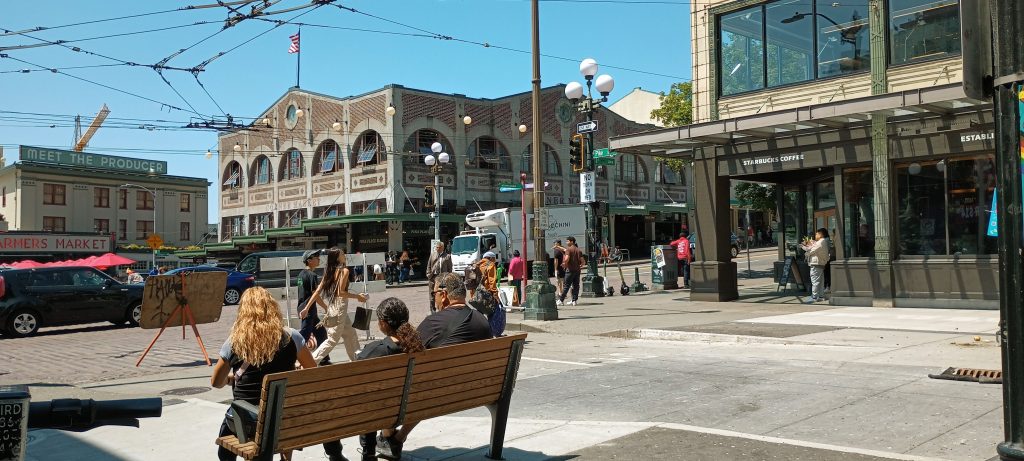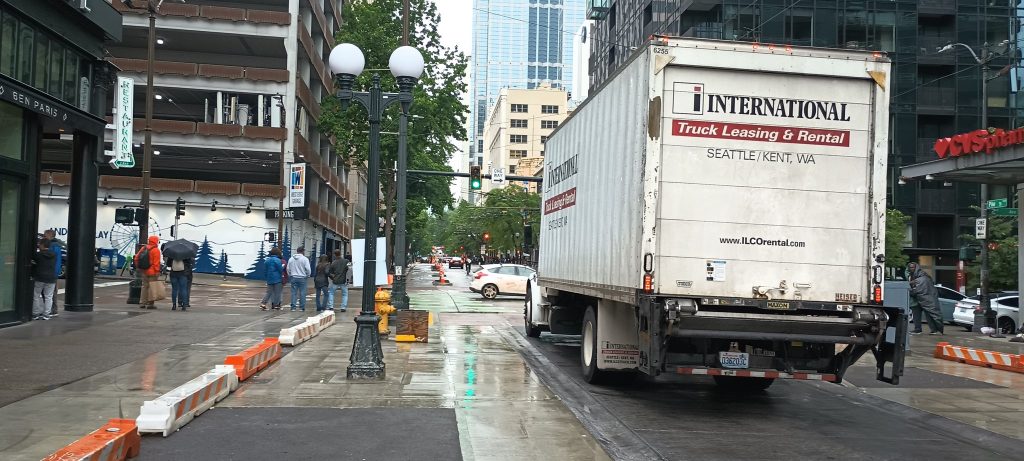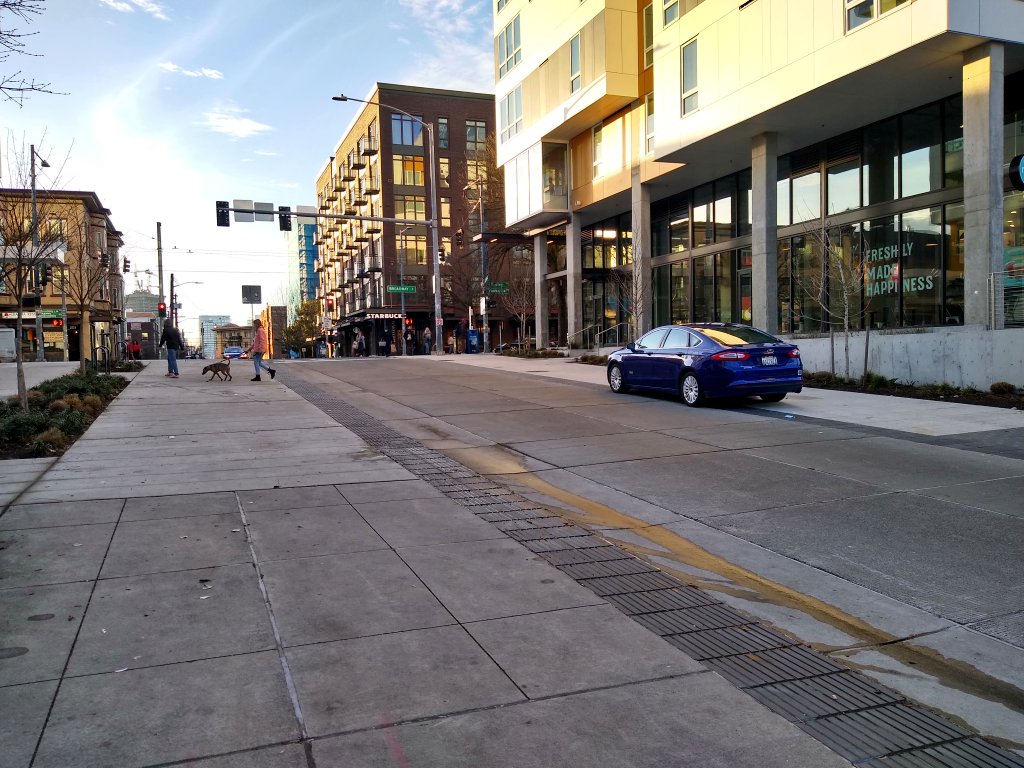
Mayor Bruce Harell announced Wednesday that one block of Pike Street, between First and Second Avenues, which has been rebuilt as part of the Seattle waterfront project as a curbless “shared street” intended to maintain through traffic, will remain closed to through vehicle traffic as a pilot while the city collects feedback and observes how the street is functioning. If ultimately made permanent, the block, immediately adjacent to the main entrance of Pike Place Market, would be the first new pedestrianized stretch of roadway in downtown Seattle in decades.
The announcement came as part of a laundry list of actions intended to activate downtown that the Harrell Administration rolled out this week. Most of those actions are geared toward making downtown more attractive to businesses, with the proposed changes upstream from the daily users of downtown streets. But keeping the closure of Pike Street in place shows those in the mayor’s central orbit are listening, at least partially, to the voices urging the City to look at how street space is allocated downtown. A fact sheet released by the Mayor’s Office called the closure a pilot “green and healthy street,” directly referencing commitments that Seattle has made internationally around reducing space for polluting vehicles.
“You noticed we closed a portion of Pike Street between First and Second Avenues for pedestrians only…we think that’s a smart move,” Harrell said at an event focused on the changes at Westlake Park. “People want to walk, people want to shop, people want to eat.”
But ever since the mid-1990s, when Seattle voters approved reopening a one-block pedestrian street on Pine Street between Westlake Park and Westlake Mall, Seattle leaders haven’t been eager to turn any of the significant amount of street space in downtown that’s devoted to vehicles over to pedestrians, even as it has become increasingly necessary to do so for public transit.

The move follows years of advocacy by groups, including Central Seattle Greenways and Downtown Greenways, to fully take advantage of the opportunities presented by the $40 million revamp of the Pike and Pine Street corridors between the Market and west Capitol Hill. The 100 block of Pike Street has long been a prime candidate for full pedestrianization, but competing interests including a desire for loading space, concern over loss of parking along First Avenue with the planned Center City Connector streetcar, and fire department access were put forward as reasons that it wasn’t feasible.
For months, the block has been closed for construction so it could be rebuilt without curbs, with a conspicuous lack of any bollards protecting pedestrians using the street from drivers. Freight vehicles have been able to use the half of the block closest to Second Avenue by using the alleyway, and will continue to be able to do so indefinitely as part of this “pilot” closure. But with drivers no longer able to travel the full length of the block between First and Second Avenues, the entire energy of the block will remain subdued; a stark contrast with high volume streets nearby like Second and Third Avenues.

When the block was being designed, some of the other “curbless shared streets” in the city, like Denny Way next to Capitol Hill station or Melrose Avenue near Pike Street, hadn’t yet fully opened. But now that they have, the issues created by eliminating curbs on a street but not providing any bollards or other barriers separating vehicle traffic, are broadly apparent, with drivers parking wherever there’s room for them and few ways for people walking or biking to assert themselves in the space. This week’s announcement suggests that Seattle’s city government is learning from past experiences and mistakes.

Whether this pilot project becomes permanent will provide a useful barometer for how people-focused downtown Seattle is becoming. One half block of fully pedestrianized street isn’t a low-emission neighborhood, but it is a sign that advocacy around reclaiming the significant amount of space devoted to moving vehicles in Seattle’s most important neighborhood is having an impact, and it could provide a template for the city to build upon in the future.
Ryan Packer has been writing for The Urbanist since 2015, and currently reports full-time as Contributing Editor. Their beats are transportation, land use, public space, traffic safety, and obscure community meetings. Packer has also reported for other regional outlets including BikePortland, Seattle Met, and PubliCola. They live in the Capitol Hill neighborhood of Seattle.

